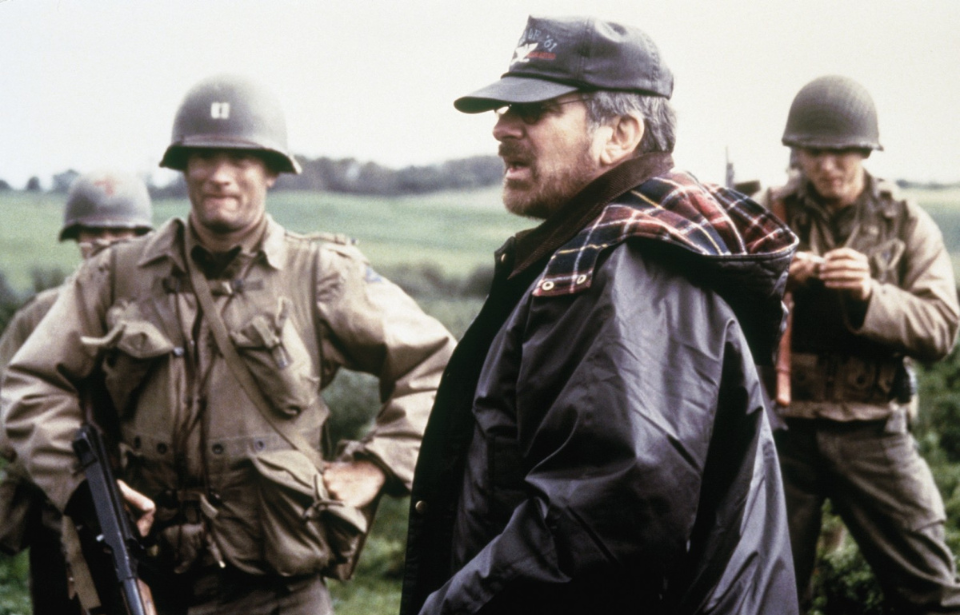The 1998 epic film Saving Private Ryan is one of the greatest, most accurate film representations of the Second World War. Directed by Steven Spielberg, the film received critical success thanks to its all-star cast, visceral imagery and powerful performances. Countless amounts of research, resources, millions of dollars and 40,000 gallons of fake blood went into creating Saving Private Ryan, as did these eight little-known facts.
An innovative take on the war movie genre
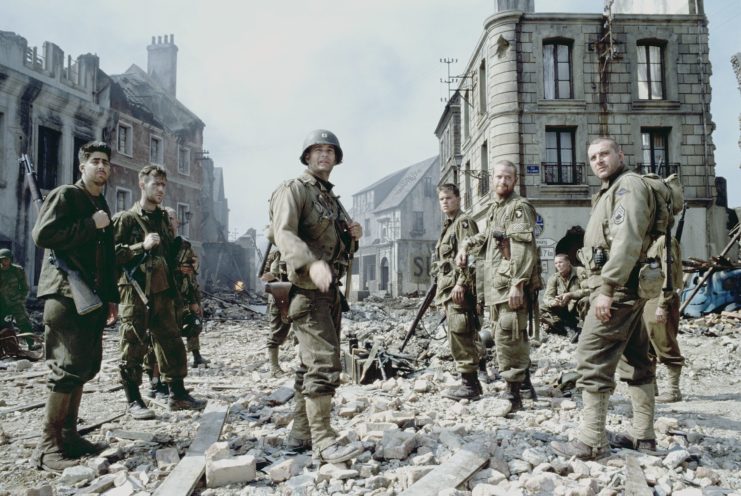
Saving Private Ryan follows a group of American soldiers tasked with locating Pvt. James Ryan. The former’s three brothers were killed in action (KIA), leaving him the sole son of his family. As part of the Sole Survivor Policy, Capt. John H. Miller (Tom Hanks) and his band of men must find Ryan (Matt Damon) and return him to safety.
Considered to be one of the greatest movies ever made, Saving Private Ryan has influenced how war movies, television series and even video games are produced. The film’s opening sequence, a harrowing first-person view of the Omaha Beach landing during D-Day, transports audiences back in time to experience the atrocities of the war and the sacrifice of over 4,000 brave soldiers.
The year of its release, the film won Golden Globes for Best Drama and Best Director (Steven Spielberg), but fans became outraged when it lost the Academy Award for Best Picture to Shakespeare in Love (1998).
Saving Private Ryan was inspired by a non-fiction book
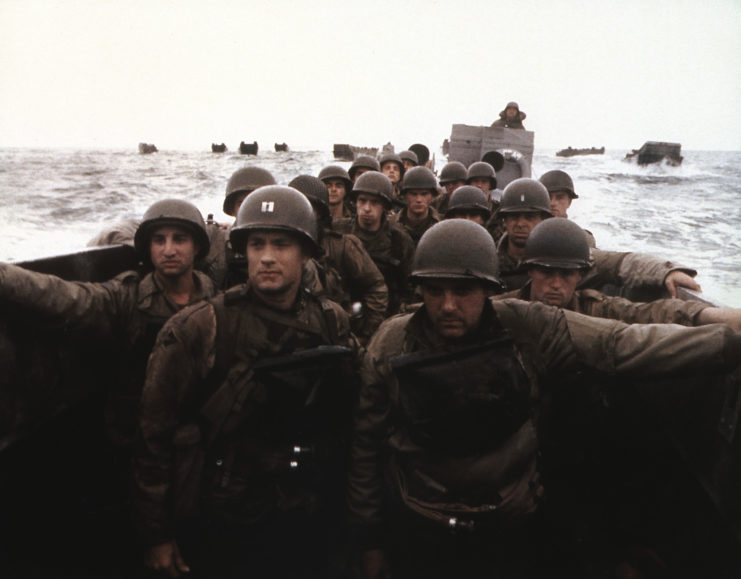
While it’s likely not surprising Saving Private Ryan is based on real events that occurred during World War II, film writer Robert Rodat came up with the story and screenplay after receiving a gift from his wife, a non-fiction book titled D-Day June 6, 1944: The Climactic Battle of World War II by Stephen E. Ambrose.
The book led Rodat to a memorial monument in New Hampshire that listed the names of American soldiers killed in combat during the war. He was overcome with emotion at seeing the endless list of names, some of whom were brothers.
The Ryan family in the film is based on four real-life siblings, the Niland brothers, who were deployed during WWII. Two of them were killed in combat, and when a third was thought to be dead, the fourth was removed from combat as per the Sole Survivor Policy.
The powerful and emotional story of the Niland brothers ultimately inspired both Rodat and Steven Spielberg, who originally wanted the film to take on a Boy’s Own style. After interviewing veterans of the war, the director decided his original idea was inappropriate and opted to focus, instead, on recreating the real-life events that unfolded during D-Day and exploring the ultimate sacrifice made to save one man.
The D-Day landing scene wasn’t filmed in Normandy
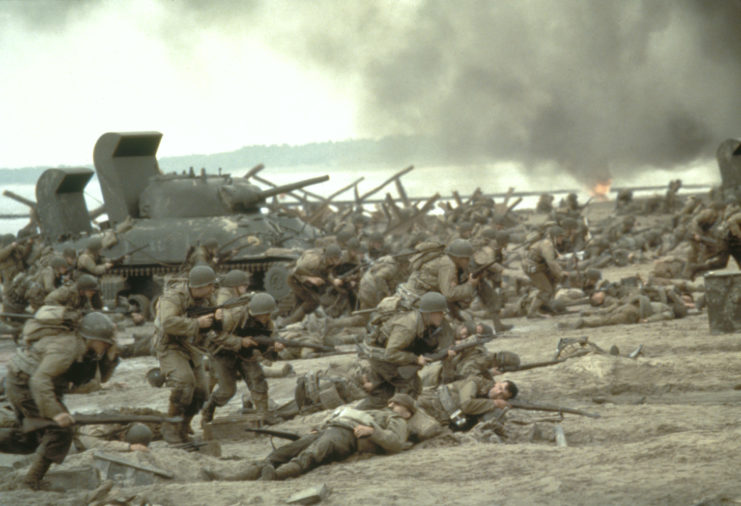
Saving Private Ryan‘s visceral opening scene shows the horrors of D-Day unfold as US troops arrive on the shores of Omaha Beach, in Normandy. Spielberg’s depiction of the bloody event is extremely accurate, except for one minor detail: it wasn’t actually filmed in Normandy.
After months of scouting locations, the director couldn’t find a French beach that met his needs, and the actual beaches used in the battle were too developed to use. Others throughout France were also off-limits, with officials denying all of Spielberg’s requests.
After more scouting in England and Scotland failed – both didn’t have the right scenery or amenities for the crew – one of the associate producers recommended Curracloe Beach, in Ireland. Curracloe had the golden sand, steep cliffs and amenities needed to replicate the French landscape.
Real amputees were used
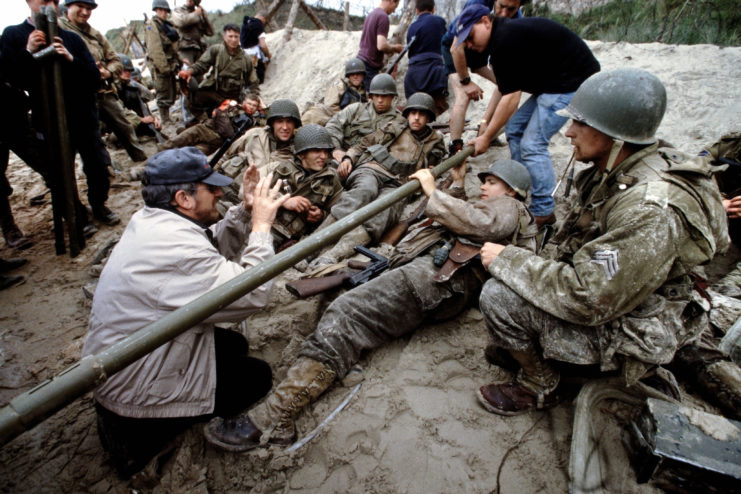
The impressive opening sequence of the film follows a group of US soldiers, led by Capt. Miller, as they land on Omaha Beach and push their way inland. The scene is bloody and intense, something important to Spielberg’s vision. “I didn’t want another war-movie stereotype,” he once said. “I was trying to get as close as I could to the experience of what a combat soldier at Omaha Beach might experience.”
This meant that 1,500 people were present to make the scene possible. Four-hundred crew members worked on the technical aspects, while 1,000 Irish Army and Reserve members and dozens of extras donned period-accurate American and German military uniforms. Spielberg also hired 30 real amputees and paraplegics to portray injured and disfigured soldiers.
It cost $12 million to film the landing scene
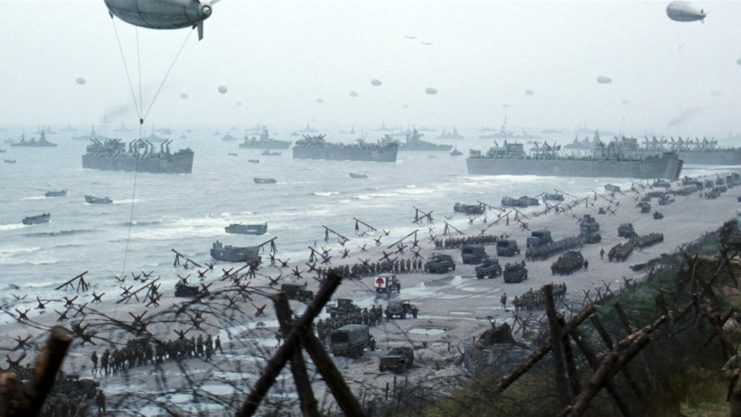
Filmed over a period of three-four weeks, the Omaha Beach scene cost a whopping $12 million dollars – a massive chunk of the Saving Private Ryan‘s $65 million budget.
No expense was spared. Costume designer Joanna Johnston reached out to the American company that made boots for soldiers during the war and had them make 2,000 period-accurate pairs using the last batch of dye available from that era. British movie armorer Simon Atherton also supplied period-accurate weapons.
Two real Higgins Boats used in the landings were used in the scene, which Tom Hanks recalled standing on during the first day of shooting:
“I was in the back of the landing craft, and that ramp went down and I saw the first 1-2-3-4 rows of guys just getting blown to bits. In my head, of course, I knew it was special effects, but I still wasn’t prepared for how tactile it was. The air literally went pink and the noise was deafening and there’s bits and pieces of stuff falling on top of you and it was horrifying.”
The cast was sent to boot camp
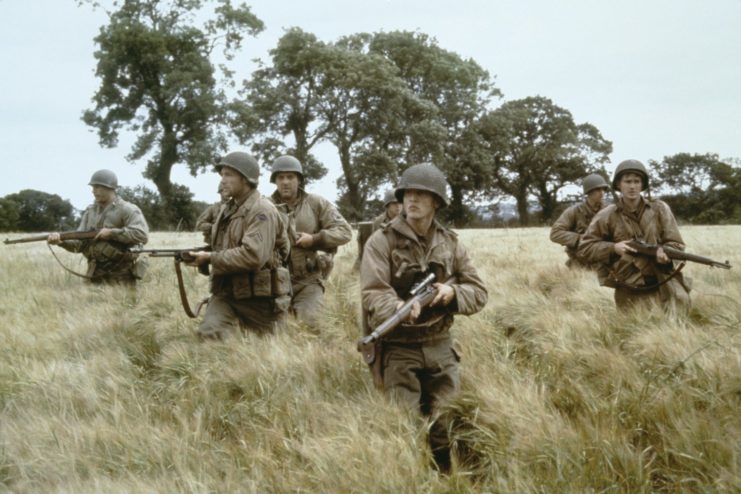
Many actors cast in war movies undergo “boot camp,” which teaches them the basics of acting like a soldier. Steven Spielberg decided that, in order to make each actor’s performance as realistic as possible, they needed to learn to “respect what it was like to be a soldier.”
The cast underwent six days of boot camp training, where each actor had to stay in character while running for five miles with stuffed backpacks. They also endured constant wet and cold conditions, received weapons training and performed tough military exercises, all on just three hours of sleep a night.
Matt Damon was the only cast member to not attend, an intentional move by Spielberg to keep him from connecting with the other actors and helping to maintain a feeling of resentment, which needed to be conveyed by Damon’s character toward Capt. Miller’s squad.
Steven Spielberg took a unique approach to filming
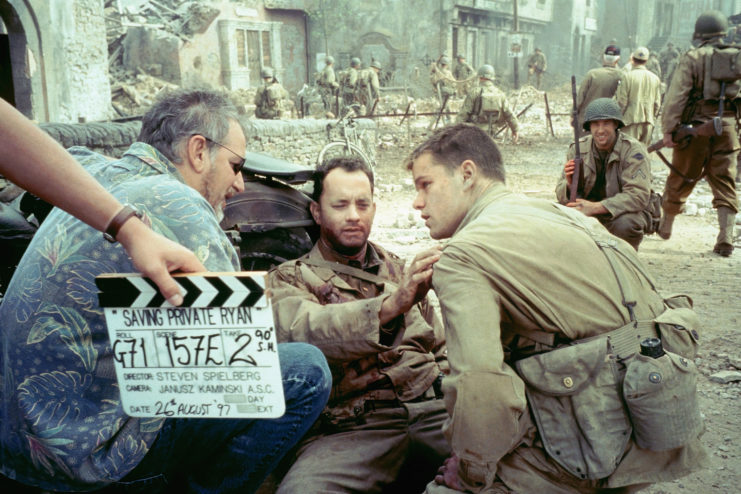
Most Hollywood movies are filmed scene-by-scene, but out of chronological order to save time and make the process more efficient. However, Steven Spielberg deliberately chose to film every scene from Saving Private Ryan in order.
By allowing the actors to experience the story from start to finish, especially as more and more of their fellow soldiers lose their lives as the film progresses, Spielberg was able to elicit more authentic and powerful emotions from the cast members.
Tom Sizemore was kept on a short leash
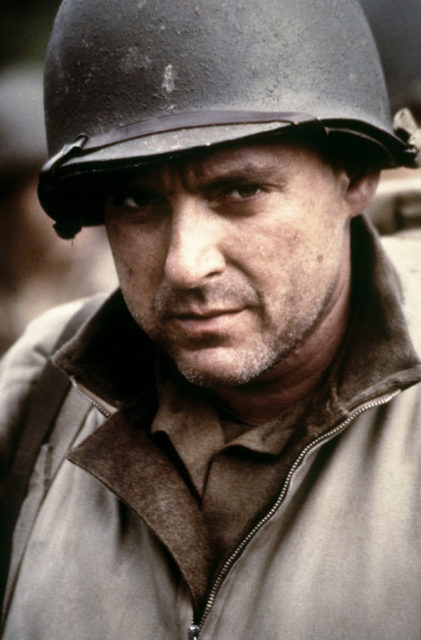
Actor Billy Bob Thornton was originally approached to play the role of Tech. Sgt. Michael Horvath in Saving Private Ryan, but turned down the offer because of his fear of water. Tom Sizemore was selected as a backup, but things soon became tense on set.
Sizemore was struggling with addiction at the time, and things got so bad that Steven Spielberg had him take a drug test every day. If he failed, he would be re-cast on the spot.
Tom Hanks and Matt Damon were not the first choice
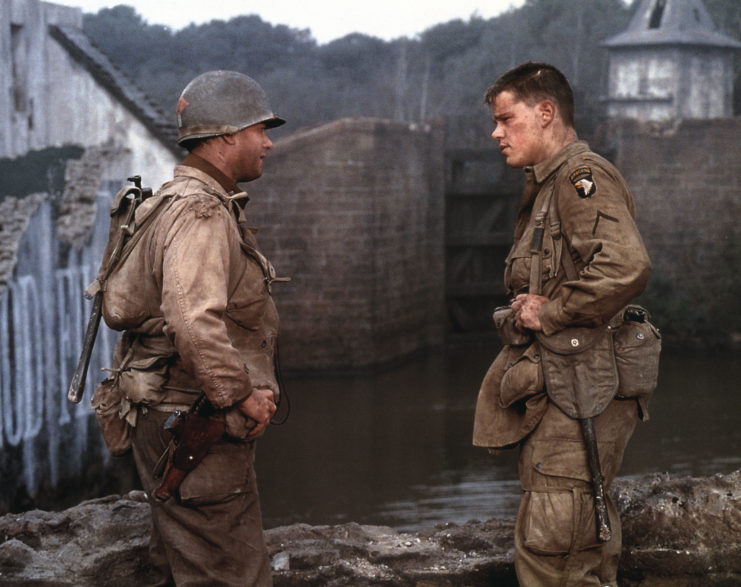
Just like Tom Sizemore, Tom Hanks and Matt Damon weren’t Steven Spielberg’s first choice to play the two leading characters. Before settling on Hanks for the role of Capt. Miller, the leader of the group tasked with finding Pvt. Ryan, Harrison Ford, Mel Gibson and Pete Postlethwaite were all top contenders.
Spielberg and Hanks had never worked together prior, but their time on Saving Private Ryan created a friendship that would last for the next two decades, as they collaborated on several movies, like Catch Me If You Can (2002) and Bridge of Spies (2015). They also had a hand in Band of Brothers (2001) and The Pacific (2010), and are now working on the highly-anticipated WWII miniseries, Masters of the Air,
Damon was also far from the first pick to play the titular role. Edward Norton, a rising star in the late 1990s, was the first choice to play Pvt. Ryan, but he ultimately turned down the role for a much larger part in American History X (1998).
More from us: The Best Movie Battle Scenes to Ever Come Out of Hollywood
Noah Wyle was the second choice for Ryan, but he, too, was already working on ER (1994-2009), so Damon stepped in. While he may have not been Spielberg’s first choice, Damon’s spectacular work in Saving Private Ryan helped launch his career to new heights.
